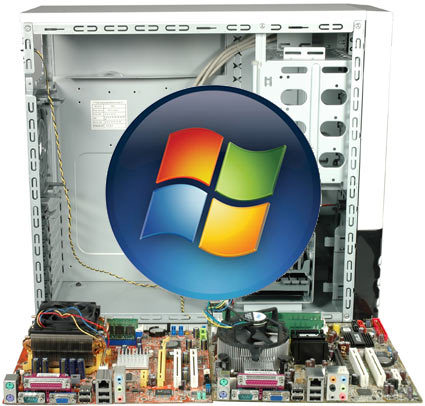Can Your PC Really Handle Vista?
Even Low-Budget PCs Can Run Windows Vista
Our first article about configuring AMD and Intel PCs within a budget of $300 made it clear that systems in this price range are suitable for everyday computing tasks. We equipped our Celeron and Sempron test systems with a fast and affordable 160 GB hard drive and one gigabyte of RAM, and the systems did a great job in Windows XP. But how do they perform with Windows Vista? And do you really know how your PC would perform with Vista?
Microsoft has created two certification logos to help customers choose the right components for their Windows Vista PC. There is "Vista Ready" and "Vista Premium Ready." If all of your components carry one of the logos, you should be able to at least run Vista properly; if you purchase high-end products you should be ready for the Premium and Ultimate editions as well. However, many products, especially older ones, do not carry any logo to indicate Vista readiness. The reason for purchasing hardware usually isn't a particular operating system, but an application or specific requirement such as more storage capacity, more RAM or a faster platform. We normally assume that the latest OS will work on hardware that we're going to buy from retail.
But what do you do if you follow the Vista upgrade path to find out that the fancy new operating system doesn't work well, or doesn't even work on your rig at all? Since the update versions of Vista require a working Windows XP installation to execute (the DVDs aren't bootable), you can at least be sure that your XP product key will still work when stepping back to use good ole' Windows XP. But you will not be able to install your Vista Update on another machine. This is why we advise against purchasing update versions, although this installation path seems to be more convenient at first. The retail versions are more expensive, but you can keep using Windows XP on one machine while running Windows Vista on another.
But we don't want the trial and error method. One way to be sure whether or not your system is ready for Vista is checking the manufacturer's Website. You can look for information regarding your system, or collect information on the individual components, but this is cumbersome. The other way is checking Microsoft's list of links to manufacturer information about CPU and graphics processor capabilities. Lastly, a smooth way of determining whether Vista will work is Microsoft's Windows Vista Upgrade Advisor. This is a utility that runs under Windows XP and the simple editions of Windows Vista.
We still have our $300 PCs at hand, so we decided to see how they ran Vista. We did not run application benchmarks since they wouldn't differ very much from the results under Windows XP. Instead, the focus is the Windows Vista Upgrade Advisor, Vista AeroGlass capabilities and the Windows Vista Experience Index.
Join our discussion on this topic
Get Tom's Hardware's best news and in-depth reviews, straight to your inbox.

Patrick Schmid was the editor-in-chief for Tom's Hardware from 2005 to 2006. He wrote numerous articles on a wide range of hardware topics, including storage, CPUs, and system builds.
